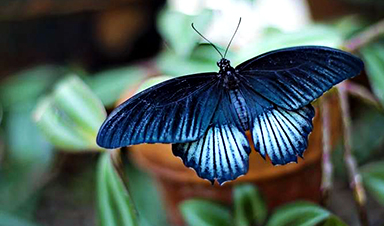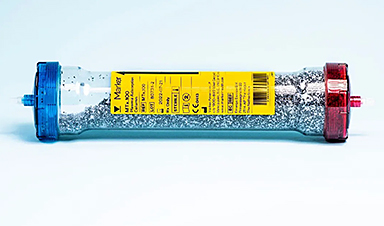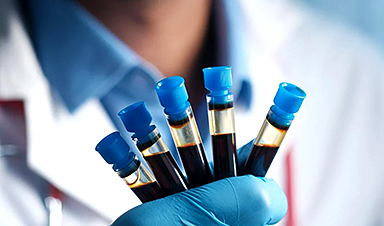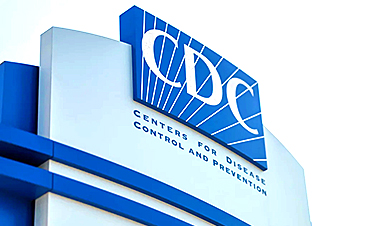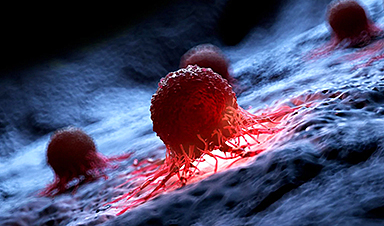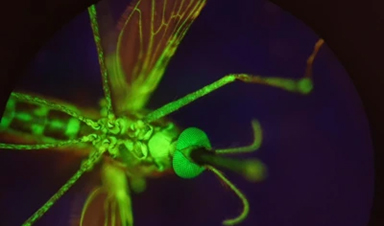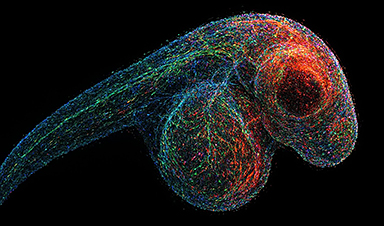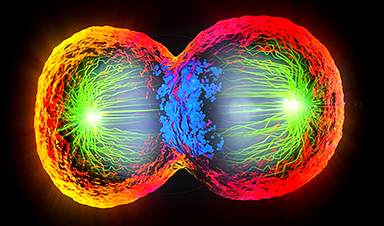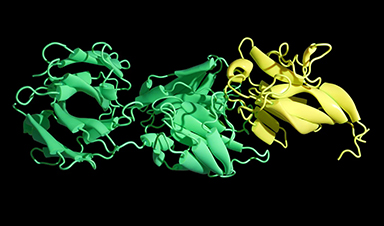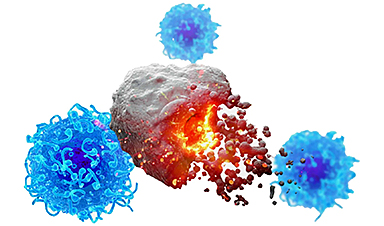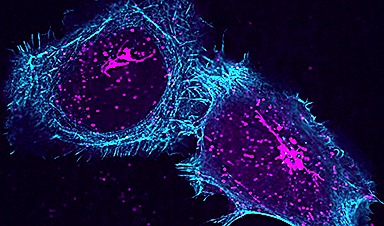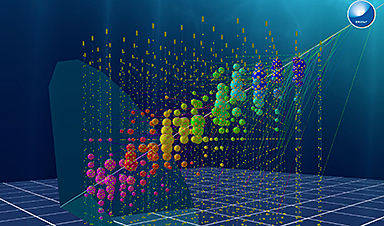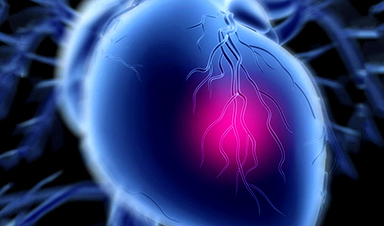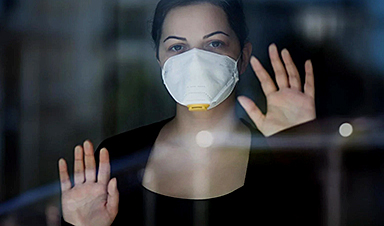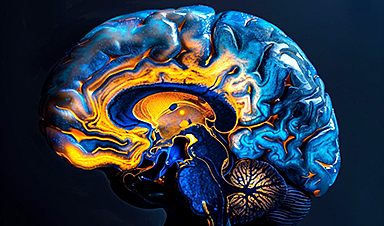An international team, led by Swinburne University of Technology and Australian National University (ANU), have made a breakthrough discovery that could potentially lead to faster, more accurate molecular or virus tests, including for COVID-19.
The team is co-led by Director of Swinburne’s Centre for Translational Atomaterials, Professor Baohua Jia, and head of the ANU’s Nonlinear Physics Centre, Distinguished Professor Yuri Kivshar. Together, they have solved one of the most persistent challenges in the study and engineering of light at nanoscale (known as nanophotonics): light field enhancement at a nanoscale. Basically, how to produce huge light energy on a miniscule scale.
Their discovery enables the creation of ultracompact sensing chips. These are the size of 100 microns (for context, that’s the size of a strand of your hair) with unprecedented sensitivity for detecting pathogens.
It brings enormous advantages, including faster and more accurate molecular detection in blood and saliva. This would vastly improve our ability to test and track viruses, reducing the chance of community transmission of contagious viruses. And, it could also play an important role in preventative health by revolutionizing how surplus sugars and other anomalies in the blood are detected.
Butterfly wings, which inspired the breakthrough, are made up of thousands of layers of tiny scales. When light hits a butterfly wing, it travels through those layers, and each layer has a concentrating effect.
“We should always learn from nature. In this work, nature-inspired innovation creates the solution to this challenge,” says Distinguished Professor Yuri Kivshar from ANU, who co-led the research with Professor Baohua Jia from Swinburne.
So, the researchers set to work designing and fabricating a nanophotonic chip that mimicked the structure of a Bicyclus butterfly wing. 3D laser nanoprinting took place in Swinburne’s Advanced Manufacturing and Design Centre. With the chip in hand, they deposited a testing sample on top and found they had achieved the impossible: they’d uncovered a way to manipulate space and time to concentrate light precisely as they pleased.
Because concentrated light has the power to pick up fewer pathogenic cells, it means everything can be scaled right down—wait times, sample sizes and testing materials. With less wastage, it’s a sustainability win too.
“We think this breakthrough will bring new possibilities and opportunities into this entire field,” Dr. Yao Liang, the first author of this study, adds.
“We are glad we have done the “mission impossible” in this field,” says Dr. Han Lin.
“We are looking forward to developing more applications based on this technology in the near future,” Professor Baohua Jia adds.
News
This Startup Says It Can Clean Your Blood of Microplastics
This is a non-exhaustive list of places microplastics have been found: Mount Everest, the Mariana Trench, Antarctic snow, clouds, plankton, turtles, whales, cattle, birds, tap water, beer, salt, human placentas, semen, breast milk, feces, testicles, [...]
New Blood Test Detects Alzheimer’s and Tracks Its Progression With 92% Accuracy
The new test could help identify which patients are most likely to benefit from new Alzheimer’s drugs. A newly developed blood test for Alzheimer’s disease not only helps confirm the presence of the condition but also [...]
The CDC buried a measles forecast that stressed the need for vaccinations
This story was originally published on ProPublica, a nonprofit newsroom that investigates abuses of power. Sign up to receive our biggest stories as soon as they’re published. ProPublica — Leaders at the Centers for Disease Control and Prevention [...]
Light-Driven Plasmonic Microrobots for Nanoparticle Manipulation
A recent study published in Nature Communications presents a new microrobotic platform designed to improve the precision and versatility of nanoparticle manipulation using light. Led by Jin Qin and colleagues, the research addresses limitations in traditional [...]
Cancer’s “Master Switch” Blocked for Good in Landmark Study
Researchers discovered peptides that permanently block a key cancer protein once thought untreatable, using a new screening method to test their effectiveness inside cells. For the first time, scientists have identified promising drug candidates [...]
AI self-cloning claims: A new frontier or a looming threat?
Chinese scientists claim that some AI models can replicate themselves and protect against shutdown. Has artificial intelligence crossed the so-called red line? Chinese researchers have published two reports on arXiv claiming that some artificial [...]
New Drug Turns Human Blood Into Mosquito-Killing Weapon
Nitisinone, a drug for rare diseases, kills mosquitoes when present in human blood and may become a new tool to fight malaria, offering longer-lasting, environmentally safer effects than ivermectin. Controlling mosquito populations is a [...]
DNA Microscopy Creates 3D Maps of Life From the Inside Out
What if you could take a picture of every gene inside a living organism—not with light, but with DNA itself? Scientists at the University of Chicago have pioneered a revolutionary imaging technique called volumetric DNA microscopy. It builds [...]
Scientists Just Captured the Stunning Process That Shapes Chromosomes
Scientists at EMBL have captured how human chromosomes fold into their signature rod shape during cell division, using a groundbreaking method called LoopTrace. By observing overlapping DNA loops forming in high resolution, they revealed that large [...]
Bird Flu Virus Is Mutating Fast – Scientists Say Our Vaccines May Not Be Enough
H5N1 influenza is evolving rapidly, weakening the effectiveness of existing antibodies and increasing its potential threat to humans. Scientists at UNC Charlotte and MIT used high-performance computational modeling to analyze thousands of viral protein-antibody interactions, revealing [...]
Revolutionary Cancer Vaccine Targets All Solid Tumors
The method triggers immune responses that inhibit melanoma, triple-negative breast cancer, lung carcinoma, and ovarian cancer. Cancer treatment vaccines have been in development since 2010, when the first was approved for prostate cancer, followed [...]
Scientists Uncover Hidden Protein Driving Autoimmune Attacks
Scientists have uncovered a critical piece of the puzzle in autoimmune diseases: a protein that helps release immune response molecules. By studying an ultra-rare condition, researchers identified ArfGAP2 as a key player in immune [...]
Mediterranean neutrino observatory sets new limits on quantum gravity
Quantum gravity is the missing link between general relativity and quantum mechanics, the yet-to-be-discovered key to a unified theory capable of explaining both the infinitely large and the infinitely small. The solution to this [...]
Challenging Previous Beliefs: Japanese Scientists Discover Hidden Protector of Heart
A Japanese research team found that the oxidized form of glutathione (GSSG) may protect heart tissue by modifying a key protein, potentially offering a novel therapeutic approach for ischemic heart failure. A new study [...]
Millions May Have Long COVID – So Why Can’t They Get Diagnosed?
Millions of people in England may be living with Long Covid without even realizing it. A large-scale analysis found that nearly 10% suspect they might have the condition but remain uncertain, often due to [...]
Researchers Reveal What Happens to Your Brain When You Don’t Get Enough Sleep
What if poor sleep was doing more than just making you tired? Researchers have discovered that disrupted sleep in older adults interferes with the brain’s ability to clean out waste, leading to memory problems [...]
